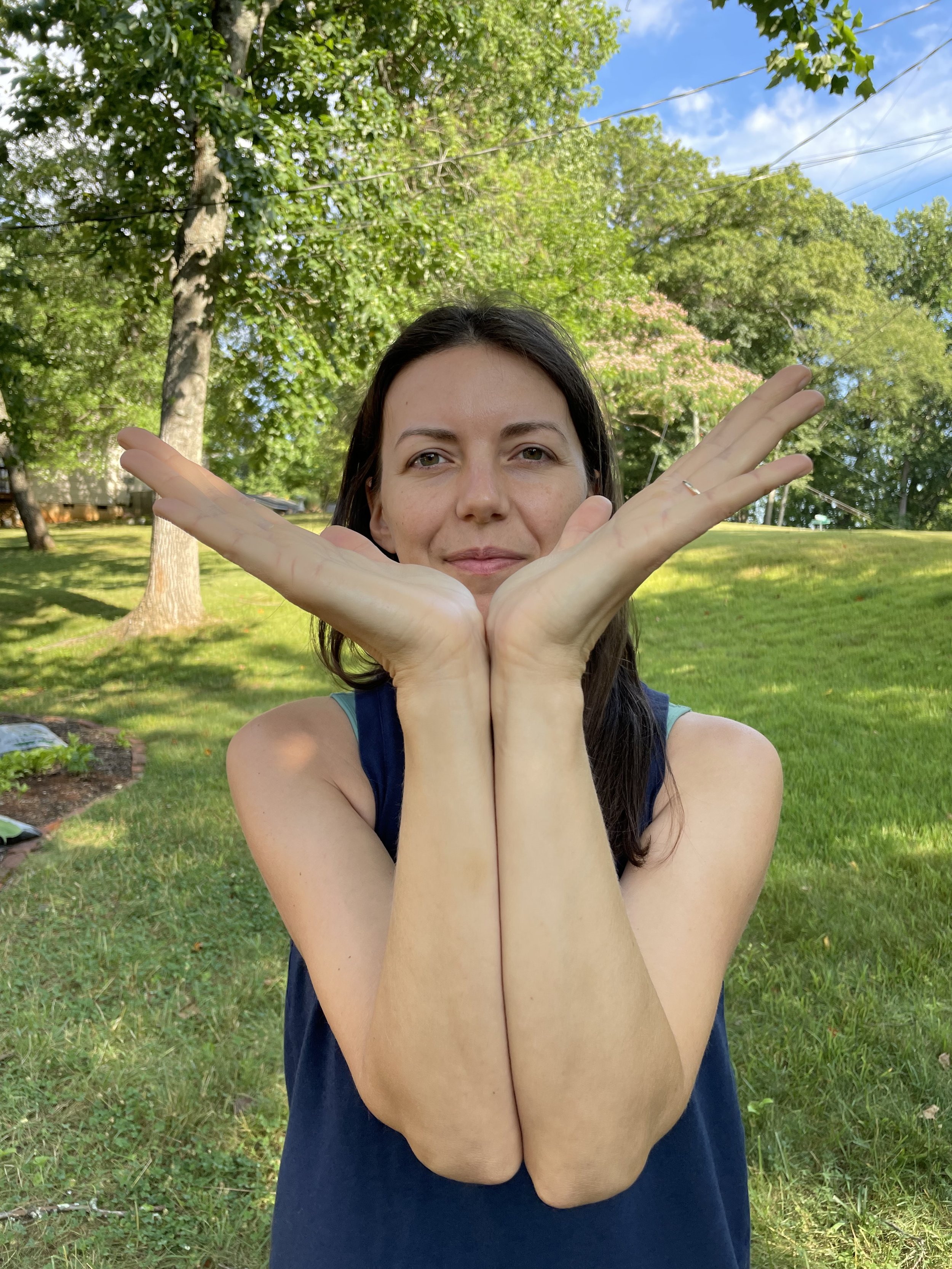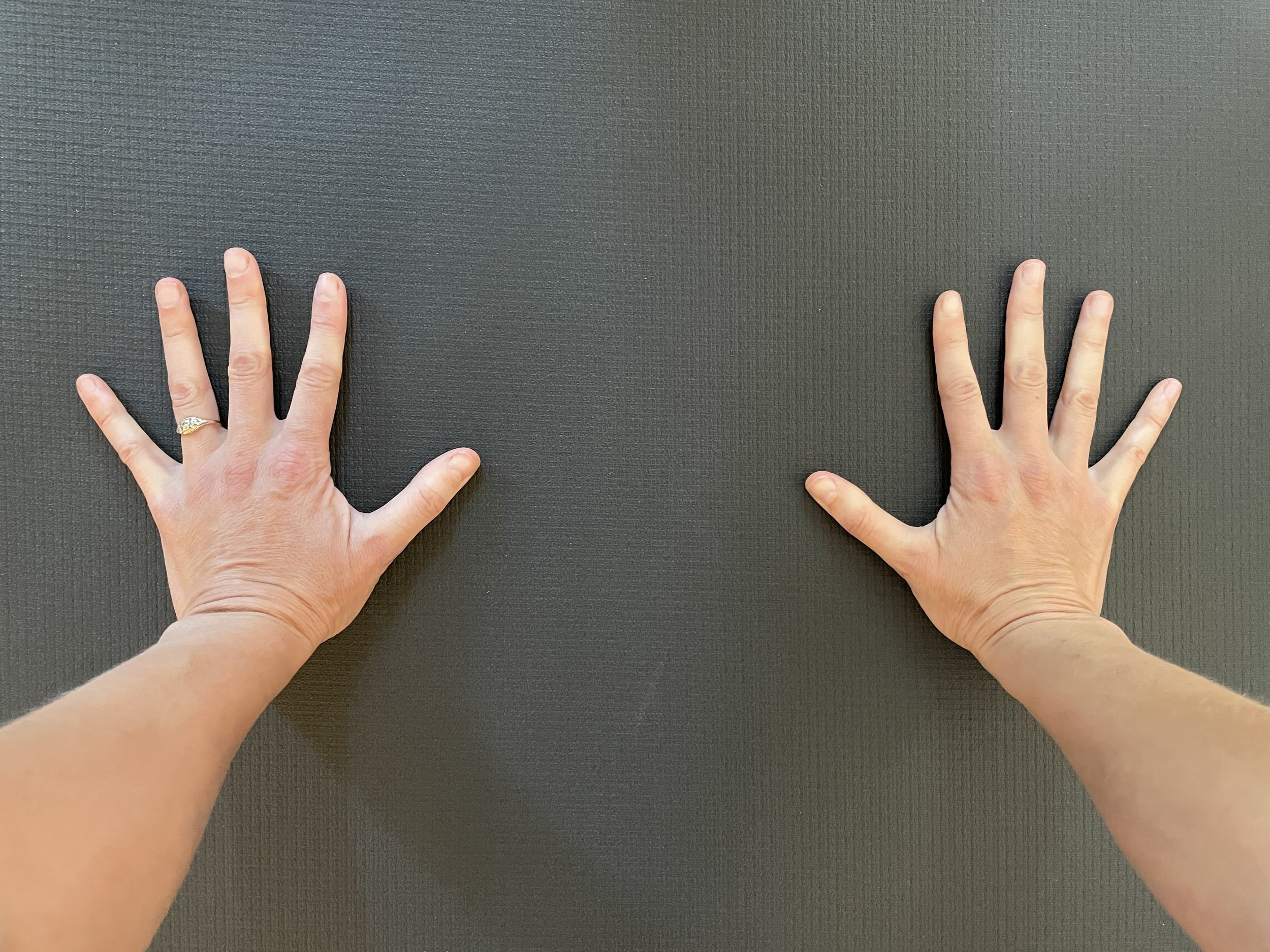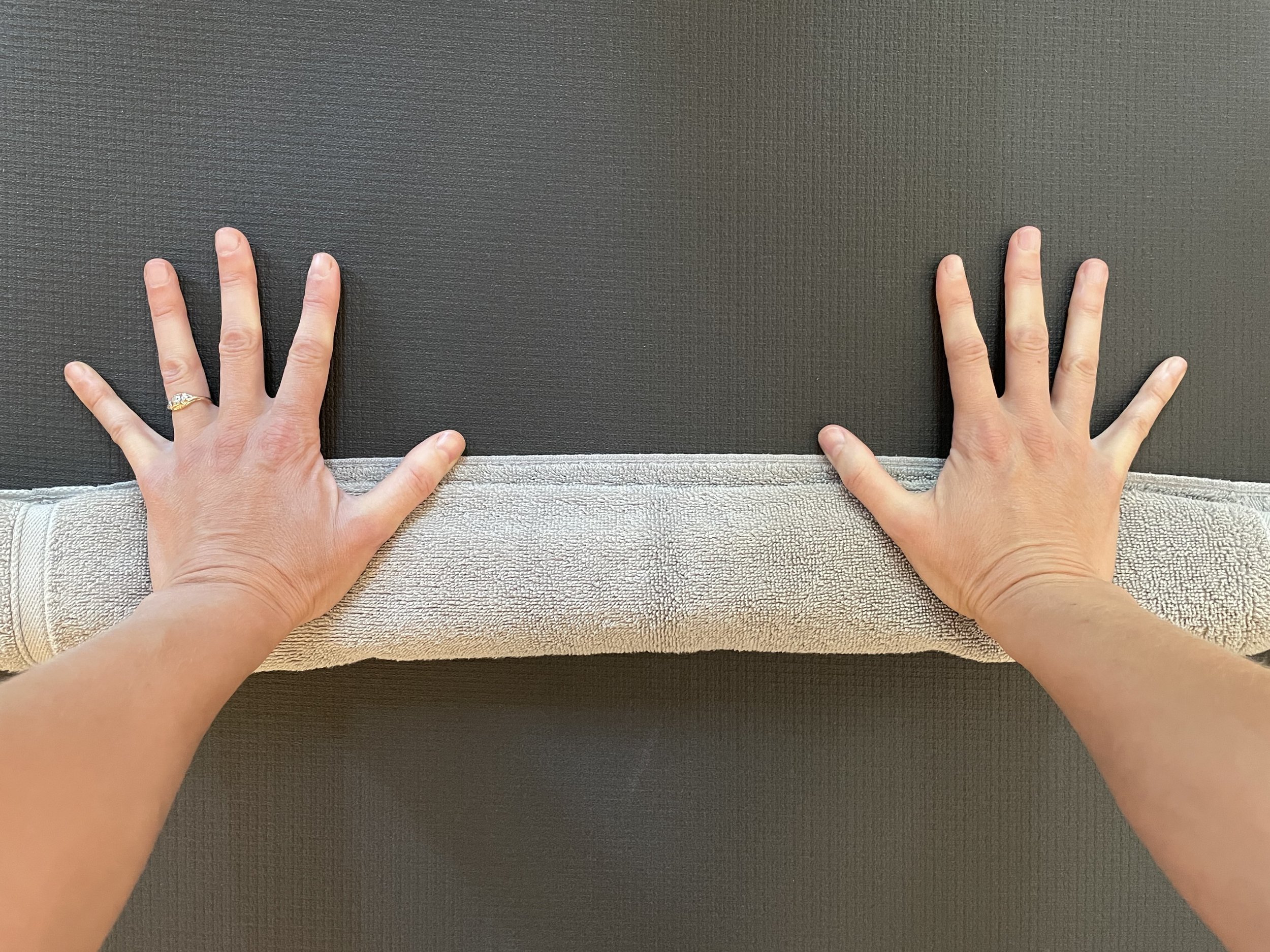Wrist Mobility + Why it Matters
10 Ideas for Wrist Pain Relief in Weight-Bearing Exercise
Sometimes I link to products I love. As an Amazon Associate, I earn a commission from qualifying purchases.
Do your wrists hurt while in weight-bearing positions like quadruped (all fours) and plank?
Are you hoping to scale up your push up game but your wrists fatigue way faster than your shoulders?
Maybe you love yoga but all the arm balancing kills your wrists.
Exercises like planks, crawling, pushups, handstands, and even just being in quadruped all require us to extend the wrist joint to about 90 degrees.
But will your wrist do that on its own?
All of these exercises are weight-bearing, which means that body weight forces the wrists into that 90 degree position—whether or not you have the muscular control to get your wrist into that position on its own.
When body weight (or some other load) forces the wrist to extend, that’s passive mobility. When the muscles in your forearm and hand do the work of extending the wrist, that’s active mobility.
As the difference between your passive mobility and your active mobility DECREASES, the less likely you are to injure yourself in one of those weight-bearing positions.
That means if your active mobility is WAY LESS than your passive mobility, bridging the gap should be high on your list of movement priorities.
Plus, if you’re already experiencing wrist pain in these weight-bearing exercises, your body could be asking your for MORE MOVEMENT. (Do you ever get cranky when you’re hungry? I certainly do. And so do your body parts! That pain in your wrists could be your body asking for a movement snack to nourish that specific area.)
In this post, I’ll teach you how to asses your active wrist mobility AND how to work with your wrists and hands to increase it.
The Test
Glue the hands and forearms together in front of you.
Extend the wrists to peel the hands apart.
How far do they go? (This is your active wrist mobility.)
Compare that to the 90 degree position your wrists take in a weight-bearing exercise (passive mobility). How great is the difference between the two positions?
My active wrist mobility is less than 90 degrees. I’m not perfect!
The Movement Snacks
Wrist CARs (Controlled Articular Rotations)
The activities of our daily lives often don’t require our wrist joints to move in all the ways they possible can. Think of wrist CARs as a “movement vitamin.” Just like you might take a B12 vitamin or some other supplement to fill a gap in your diet, you would probably benefit from taking a “movement vitamin” to get a certain part of you moving more and in more varied ways. Adding wrist CARs (controlled articular rotations) to your daily routine will help you create more resilient wrists to support your body in weight bearing positions.
I like to think of CARs as self-resisted circles. Essentially, it’s a glorified wrist circle but performed while creating tension throughout the movement. Instead of just circling your wrist somewhat haphazardly, CARs require you to resist yourself a bit as you intentionally and slowly move through the range of motion of your wrist. (Imagine making wrist circles in a bowl of ice cold molasses.) This action reminds your brain of the movement possibilities that exist in the wrist.
Hand massage, 2 ways
The amount of tension in your hands can affect the movement of the wrist. These techniques address both the palm and the back of the hand.
Roll the palm of your hand on a ball. For sensitive hands, start soft with a foam golf ball. To get a bit more pressure, use a bouncy ball (yes, the ones that cost about 50 cents outside the grocery store). For tough hands that can handle the stimulation, a ball like this one can feel nice. For less pressure, simply roll the ball in between your hands. To increase the pressure, roll one hand at a time on a table or countertop. For the most pressure, roll in the quadruped position.
Massage the backside of your hand. Find the valleys in between the long bones on the back of the hand. Place your finger tips in the groove with your thumb on your palm. Hold pressure with your finger tips and do your most flamboyant spirit fingers. Repeat in each groove on each hand.
Joy stick thumb
In the same way that your daily activities don’t require your wrist to move through its full range of motion, your thumbs could probably use a movement snack as well (especially after all that texting and phone scrolling).
Hold your thumb like a joystick. Circle it around like you’re playing an old school video game. Then, pull the thumb away at a gentle stretch and actively reach the rest of the fingers away. You can even repeat those spirit fingers and watch for how/if the stretch sensation changes.
Joystick Thumb
Wrist Relevés
Ballet dancers spend a ton of time at the barre warming up their feet and ankles before rising up to their toes. Why not offer our wrists the same opportunity before we bear weight on our hands?
Relevé means “raised up” so this exercise involves pushing through the long bones of the hands and fingers to lift the wrists away from the ground. You can begin the exercise against the wall or on a table and, as your hands and wrists get stronger, you can move to the floor in quadruped.
Set up your hands using the positioning tips below. Keep the fingers long and press through them until the heels of the hands and knuckles lift. Lower more slowly than you lifted without letting the hand bend at the knuckles.
Positioning Tips
You don’t have to stop practicing weight bearing exercises until your active wrist mobility is at 90 degrees. These tips will help you keep up with your training while giving your wrists the extra TLC they require.
Pay attention to your hands:
Space your hands shoulder width apart.
Spread your fingers so you can see the ground or mat between each finger.
Aim to create a 90 degree angle between your middle finger and thumb
Press every finger joint into the ground to spread the weight out evenly, distributing the load across the whole hand.
When weight-bearing on your hands, bolster your wrists into their active range by placing a wedge, rolled towel, or blanket under the heels and/or palms of the hands.
Spend more time in this position to remind your nervous system that these exercises are a safe and okay place to hang out.
As your active wrist mobility increases, gradually scale down your bolstering.
Conclusion
Wrist pain sucks not just because it hurts, but also because it can hold you back from practicing other beneficial movements. Increasing your active wrist mobility can help you get comfortable in weight-bearing positions while also decreasing your risk of injury.










